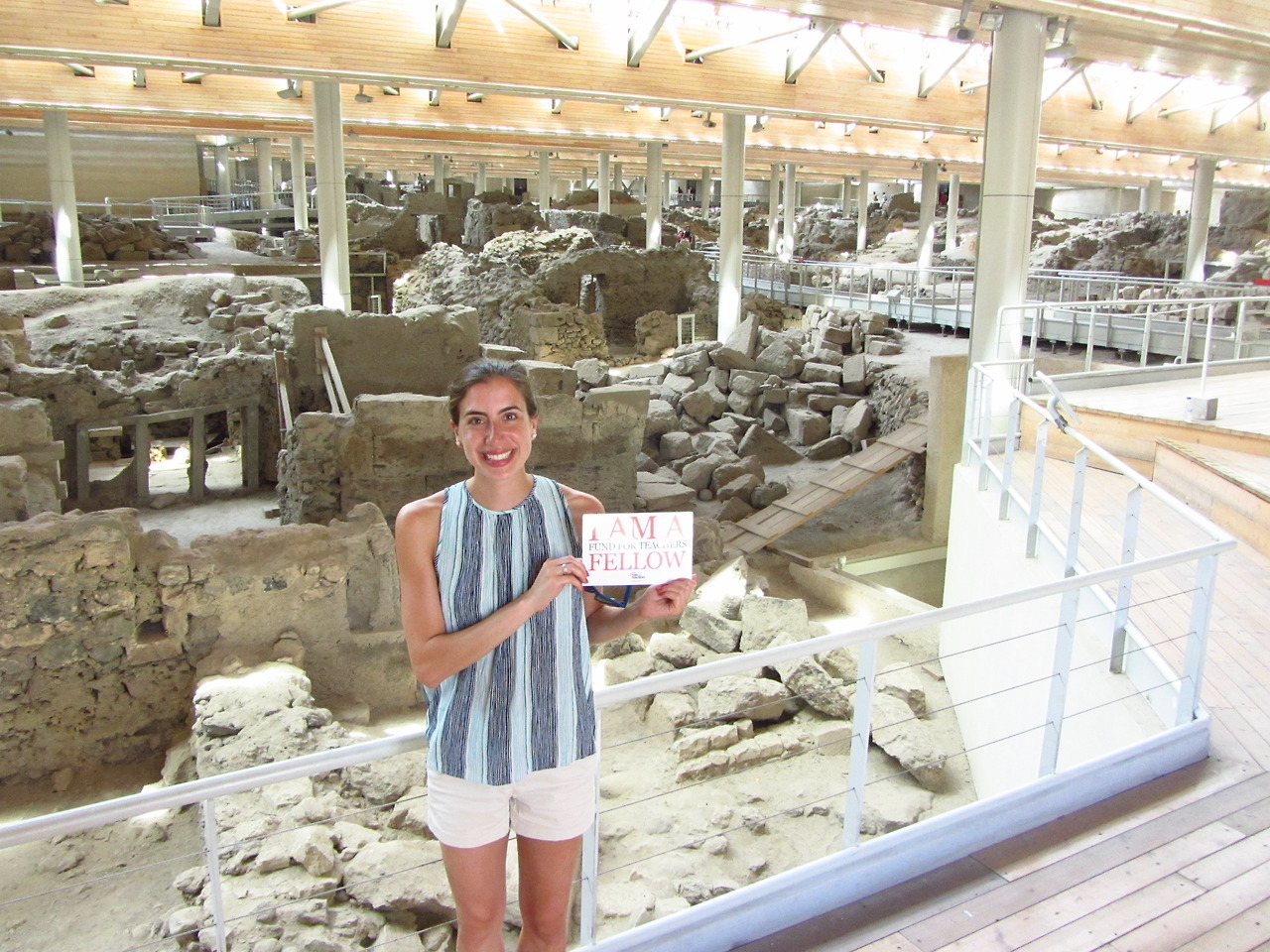World Science Day for Peace and Development

Per a proclamation by the United Nations, today is World Science Day for Peace & Development – an apropos time to highlight the fellowship of Emily Hart, chemistry teacher at KIPP NYC College Prep High School in the Bronx.
The United Nations Educational, Scientific and Cultural Organization (UNESCO) celebrates this day in order “to underscore the role scientists play in broadening our understanding of the remarkable, fragile planet we call home and in making our societies more sustainable.” Similarly, the focus of Emily’s FFT fellowship was to study the debilitating effects of acid rain and other environmental factors on archaeological sites in Greece.
“I designed a fellowship to explore Greece’s ancient archaeological sites and learn from experts in the field of conservation and restoration,” said Emily. “These sites provide a unique opportunity to gain a deep understanding of the chemical processes behind the decomposition of these magnificent structures caused by environmental factors such as acid rain. The powerful combination of chemical change and historical relevance at these ancient sites is now capturing students’ interest in chemistry as never before.”
During her fellowship, Emily met with one of only 22 conservators on the Acropolis, learning in one of the small office buildings next to the Parthenon. She also secured a back stage visit through the collections and laboratories at the National Archaeological Museum in Athens, known to be the leader for conservation efforts of ancient Greek art and cultural pieces. To transfer her experiences to the classroom, Emily is planning to host an “Effort Olympics” simultaneous to the Winter Olympics in February. Students will display research and findings related to authentic experiences applying acid-based chemistry and be awarded medals in various categories.
“Students will be busy researching the composition of acid rain using the EPA website and investigating the chemical reaction of acid rain and limestone (the common component of Greek sites) through a multi-day lab activity.” said Emily. “The plan is for them to then set up a simulation of decomposition using the scientific method to see in real time the effects of acid rain on calcite (a mineral that comprises limestone). In their conclusion, students will compare and contrast this chemical reaction to others we have discussed. Also, students will complete a comprehensive analysis citing data to explain how acid rain is an urgent problem and provide suggestions on what society should do about it. This lab report will assess students’ ability to complete scientific writing, using the evidence collected to explain a real world phenomena.”
“I love how chemistry has the ability to explain different phenomena like acid rain and how something that we might think isn’t important has the ability to change history and a person’s whole way of living,” said Jasmine, one of Emily’s students. Another student, Maya, added: “I’ve always been interested in biochemistry, so the story how the site of Akrotiri was preserved is fascinating. I like learning about history and this project will be a cool way to combine my knowledge, getting the best of both worlds.”
UNESCO would be so pleased to see this international day honored throughout the school year by Emily and her students!
 Back to Blogs
Back to Blogs